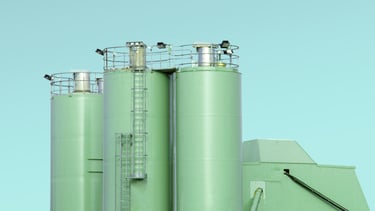
Energy
Improvement with purpose
Energy systems operate in demanding environments: high temperatures, corrosive media, pressure cycles, and continuous mechanical stress. Whether in conventional power plants, renewable energy systems, or hydrogen technology – materials are pushed to their limits. Traditional coatings often degrade over time, delaminate, or are incompatible with aggressive process media and high thermal loads.
Nanostructured surfaces can directly enhance the performance of critical parts at the material level. They can improve corrosion and wear resistance, enable anti-fouling or de-icing effects, and extend the service life of critical components – without adding foreign materials or compromising mechanical integrity. This makes nanostructures particularly suitable for components in energy production, storage, and transfer.
Corrosion resistance
Increases durability of metal surfaces in aggressive chemical or high-humidity environments.
Wear protection
Anti-fouling
Enhances surface robustness under high pressure or cyclic mechanical loads.
Helps reduce buildup of deposits, dirt, or biological material on exposed surfaces.
Heat Exchangers & Condenser Surfaces
Metallic heat exchanger components – especially in steam cycles or geothermal systems – are prone to corrosion, scaling, and fouling, which reduce thermal efficiency over time. Nanostructured surfaces can reduce deposit formation and improve corrosion resistance drastically improving the long-term stability under high temperature and humidity.


Hydrogen Storage & Distribution Components
Materials used in hydrogen systems such as valves, seals, or tank interiors must withstand high pressure and avoid embrittlement or micro-cracks. Nanostructured surfaces can help improve fatigue resistance and surface stability, while maintaining material compatibility.


Wind Turbine Components
Wind turbine parts such as bearings, shafts, or blade connection elements are exposed to continuous mechanical stress, humidity, and salt in offshore environments. Nanostructured surfaces can improve wear resistance, reduce friction, and help completely prevent corrosion – supporting higher efficiency and longer service life in harsh conditions.


Looking to increase resilience in energy systems?
We support you in developing surfaces that withstand the extreme: from corrosion to pressure to fouling. With nanoshape, surfaces can be optimized for longer life, improved reliability, and lower maintenance.


